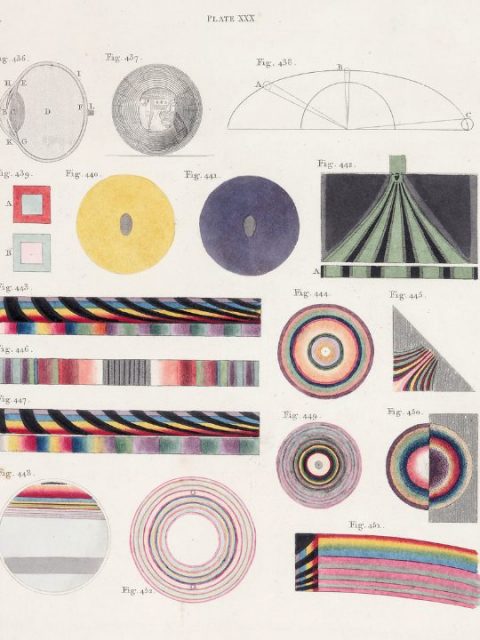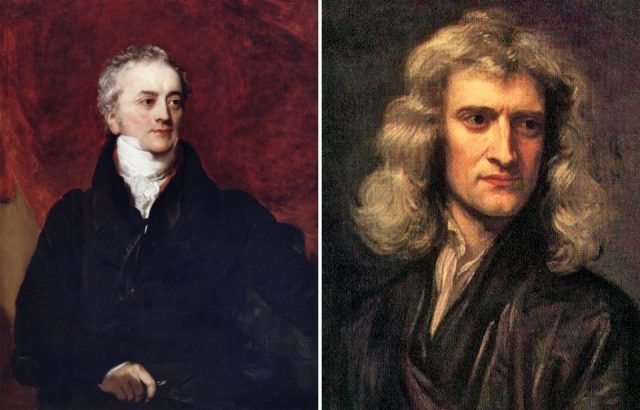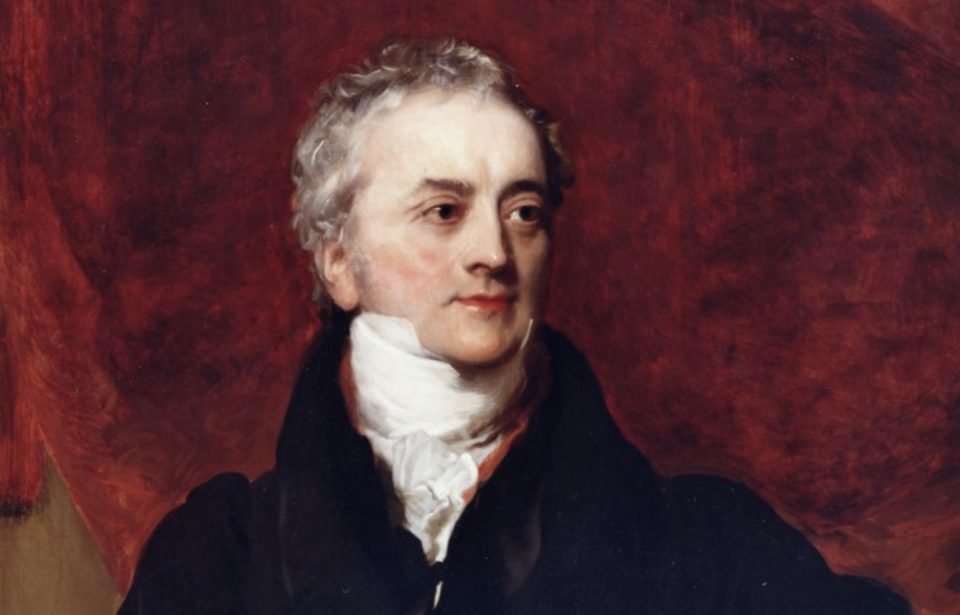Thomas Young (1773–1829) was a British science talent who disagreed with Sir Isaac Newton about how light worked. And he was right to challenge Newton’s view that light was a particle.
Young is nowhere near as well known as Newton. Not surprising — the legendary thinker’s range of interests was vast. But Young also made his mark as a polymath who explored a wide variety of fields.
Is light a particle or a wave?
Back in the 19th century, before quantum mechanics was a thing, physicists tried to grasp the subject of light.

The branch of physics concerning light is called optics — indeed, Newton released a book titled Opticks in 1704. He felt he was pretty illuminated on the subject. His ideas at the time centred on particles, or “corpuscles.”
Profiling Thomas Young, a 2008 issue of American Physical Society News mentions the connections he made with sound when figuring out light.
Sound waves can flow through nooks and crannies. Because light quite literally hits a brick wall and gets blocked, the assumption followed that it couldn’t be a wave and that the corpuscle was king.
Ray hello, Wave goodbye…?
Young wanted to show that light came in waves rather than particles. When reading Opticks, the acknowledged gaps in Newton’s theory were apparent.
It wasn’t as simple as comparing one element with another. Light was clearly more complex than first appeared.
Written about by APS, Young noted that “at interfaces such as that between air and water, some light is reflected and some is refracted.” Why was the reflection/refraction taking place? Newton and his particles “can’t easily explain why that happens.”
Thomas Young’s double-slit experiment made the case for light traveling in waves
In 1801, Young made a presentation at the Royal Society, using an experiment he’d been perfecting. The focus was on how light traveled between two slits, which were placed close together.

How would two slits demonstrate Young’s ideas? He believed it was a good way of showing how light reacted as a wave, displaying signs of interference. As APS writes, sound waves could mingle, so why not light?
Forbes details the findings of Young’s double-slit gambit. He and onlookers saw that instead of showing particle-like behavior, “where it would either pass through one slit or the other,” the light “displayed an interference pattern: a series of light-and-dark bands.”
Young put on quite a show, but didn’t end up on the world stage
The article from Forbes examined the work of Augustin-Jean Fresnel from France, who sought to settle the particle-versus-wave question later, in 1818. Another contemporary of Newton’s was Dutch physicist Christian Huygens.

All made their contribution, but the shadow of Newton loomed large. Young had produced solid results regarding interference patterns and color wavelength. However, reviews are a terrible thing even in the world of science.
Young decided to concentrate on medicine after this ego-bruising experience, though the giddy heights of scientific discovery weren’t reached. Still, his impact on physics was sizeable. A century or so later, Albert Einstein would read up on his ideas when putting his own world-changing theories together.
Light has since been proved to act as both a particle and a wave. Newton may have been a titan of the science community but, as Young figured out, he didn’t have a monopoly on the field.
Thomas Young had a range of scientific interests that are celebrated today
As well as physics, Young studied physiology, language, Egyptology, and other subjects. The title of Andrew Robinson’s 2006 biography sums it up: The Last Man Who Knew Everything.
In later life, he worked on the Rosetta Stone, hoping to translate its ancient meaning. Young passed away in 1829 at the age of just 55.
More from us: The Daredevil Rocketeer Who Invented The Rocket Car
The big guns often share a test tube with other, smaller personalities without whom they wouldn’t have made their name. Young may not have successfully challenged Newton, but his influence on others meant his legacy lasted as long.
